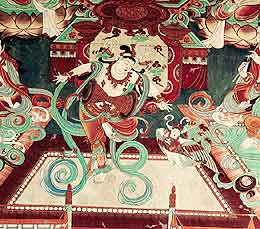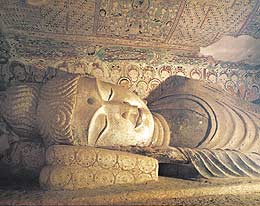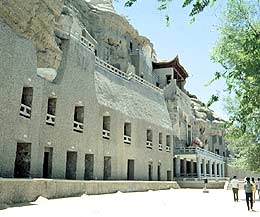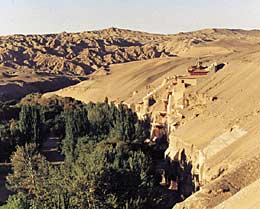The Mogao Grottoes
Located on the eastern slope of Rattling Sand Mountain (Mingshashan) southeast of Dunhuang County in Gansu Province, the Mogao Grottoes (also known as Thousand Buddha Cave) is one of three noted grottoes in China and also the largest, best preserved and richest treasure house of Buddhist art in the world.
In AD 366, during the Eastern Jin Dynasty, a monk named Yue Seng chiseled the first cave here. The endeavor continued through later dynasties, including the Northern Wei (386-534), Western Wei (535-556), Northern Zhou (557-581), Sui (581-618), Tang (618-907), Five Dynasties (907-960), Song (960-1279), Western Xia (1038-1227) and Yuan (1279-1368), resulting in the fantastic group of caves that can been seen today.
 |
Despite years of erosion, the murals are still brightly colored, with clear lines. Through pictures of different styles and schools drawn in different historical periods, they tell Buddhist stories and ways as well as life in the secular world. All these, plus a largest quantity of Buddhist sutras and relics kept in the caves have provided valuable material for a study of ancient China's politics, economy, and culture and arts, as well as its science and technology, military affairs, and religion, documenting national history as well as cultural exchanges between China and the world.
In 1987, UNESCO placed the Mogao Grottoes under the protection of the world cultural heritage list.
 |
 |
 |
Gansu Mogao Dunhuang Academy
Tel: 86-937-8869008
(China.org.cn September 12, 2003)
 0
0 







Go to Forum >>0 Comments